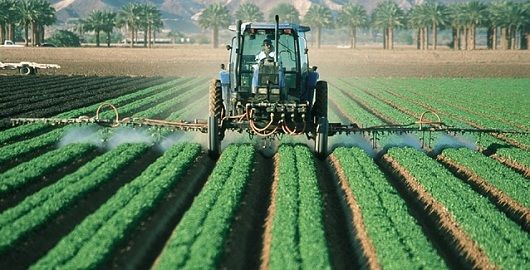Comprehending the Impact of Chemical-free Farming on Environmental Wellness
The exploration of natural farming's impact on ecological health and wellness offers a compelling narrative of eco-friendly balance and sustainability. By prioritizing natural procedures over artificial treatments, natural farming methods offer an encouraging service to some of the most pressing ecological obstacles.
Enhancing Dirt Fertility
Enhancing dirt fertility is a foundation of natural farming, as it straight impacts plant yield and ecological sustainability. Organic techniques prioritize the all-natural enrichment of soil wellness, mainly through the usage of organic matter such as garden compost, green manure, and cover crops. These approaches improve dirt framework, water retention, and nutrition availability, promoting a prospering ecological community of microorganisms and beneficial insects that add to soil health.
Organic farming eschews synthetic fertilizers, opting rather for all-natural changes that promote well balanced nutrient biking. This method not just renews crucial nutrients like nitrogen, phosphorus, and potassium but additionally improves the dirt's ability to withdraw carbon, reducing environment adjustment results. The combination of crop turning and polyculture techniques further adds to dirt fertility by stopping nutrition depletion and reducing pest stress.
In addition, the focus on maintaining living origins year-round with cover cropping helps in reducing dirt disintegration and promote biodiversity. This organic variety is crucial for lasting agriculture, as it supports strength versus illness and insects. In summary, chemical-free farming's concentrate on enhancing soil fertility not only increases efficiency but additionally straightens with wider ecological goals, making certain long-lasting agricultural feasibility and environmental equilibrium.
Minimizing Pollution
By avoiding artificial plant foods and pesticides, natural farming substantially reduces the leaching of harmful chemicals right into dirt and water systems. Organic farming's reliance on natural fertilizers, such as garden compost and environment-friendly manure, further improves dirt wellness without introducing pollutants.
In addition, organic farming methods add to air high quality enhancement. Organic farming often includes plant rotation and cover cropping, methods that improve carbon sequestration and decrease greenhouse gas exhausts.
In addition, natural qualification requirements implement rigorous standards on waste administration, ensuring that farming residues are dealt with in an environmentally liable fashion. These measures jointly reduce the pollution concern on the atmosphere, advertising a cleaner, much healthier environment. Thus, organic farming plays a crucial role in suppressing contamination and promoting sustainable agricultural landscapes.
Supporting Biodiversity
Usually, natural farming plays an important role in advertising biodiversity by promoting a diverse environment within farming landscapes. This practice embraces all-natural processes, preventing artificial chemicals and genetically modified microorganisms, which can disrupt regional flora and fauna. By utilizing crop turning, polyculture, and the maintenance of all-natural habitats, natural farming supports a variety of varieties, from dirt microorganisms to pollinators and predators that normally control insect populations.
Among the key elements of natural farming that improves biodiversity is the focus on maintaining and improving soil health and wellness. Healthy and balanced soils act as habitats for a plethora of click here now microorganisms, adding to nutrient biking and ecological community strength. The evasion of artificial chemicals and plant foods decreases hazardous drainage, securing surrounding ecosystems and water see this site bodies from contamination, which usually leads to a richer biodiversity in bordering locations.
Moreover, organic ranches usually integrate barrier zones, hedgerows, and cover crops, which provide added habitats and food resources for wildlife. These attributes produce corridors for pet activity and increase genetic diversity within populaces. By advertising ecological equilibrium and durability, chemical-free farming assists maintain varied life types, inevitably adding to the stability and efficiency of agricultural systems and the wider atmosphere.
Conserving Water Resources
Organic farming considerably adds to the preservation of water sources through sustainable techniques that enhance water effectiveness and reduce contamination. By stressing dirt health, natural farming boosts the soil's ability to retain moisture, therefore reducing the requirement for too much watering. Methods such as plant turning, cover chopping, and making use of raw material enhance the dirt structure, boosting its water retention capacity. This method not just conserves water however likewise guarantees the durability of plants during periods of dry spell.
Additionally, chemical-free farming lessens water air pollution by eliminating artificial plant foods and chemicals, which are common impurities in conventional agriculture. The reliance on all-natural pest control approaches and organic inputs minimizes the overflow of hazardous materials into water bodies, protecting aquatic environments and preserving the top quality of water resources. This technique helps safeguard biodiversity in waterways and sustains the wellness of communities reliant on these water sources.
Furthermore, natural farmers usually carry out rain harvesting systems and employ drip watering techniques that effectively supply water straight to plant origins, further enhancing water use. These strategies jointly add to the sustainable monitoring of water sources, guaranteeing their accessibility for future generations while supporting farming productivity.

Boosting Carbon Sequestration
Enhancing carbon sequestration is one of the crucial benefits of natural farming techniques, which play a vital role in mitigating climate modification. By promoting much healthier soil ecological communities, organic farming boosts the dirt's capability to record and keep carbon dioxide from the ambience.

Additionally, natural farming lowers reliance on synthetic fertilizers, which are connected with greenhouse gas discharges throughout their manufacturing and application. By fostering a shut nutrient cycle, natural systems lessen discharges while catching even more carbon in the soil. Subsequently, natural farming stands for a lasting technique to resolving worldwide environment obstacles.
Verdict
The influence of natural farming on environmental health and wellness is profound, as it boosts soil fertility, minimizes pollution, and advertises biodiversity. By focusing on lasting techniques and natural modifications, organic farming reduces chemical runoff, shielding water communities.
Enhancing soil fertility is a cornerstone of natural farming, as it directly impacts crop yield and environmental sustainability. Organic techniques prioritize the natural enrichment of soil wellness, largely through the use of natural matter such as garden compost, environment-friendly manure, and cover crops. By eschewing artificial fertilizers and pesticides, natural farming significantly lowers the leaching of dangerous chemicals right into dirt and water systems. By stressing dirt health, natural farming boosts the soil's ability to keep dampness, therefore minimizing the requirement for too much watering. By advertising much healthier soil environments, natural farming improves the soil's capability to keep and record carbon dioxide from the atmosphere.